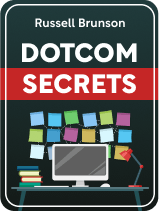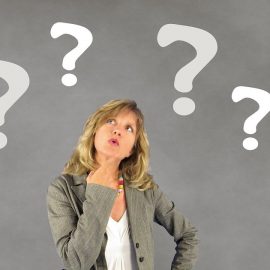

This article is an excerpt from the Shortform book guide to "Dotcom Secrets" by Russell Brunson. Shortform has the world's best summaries and analyses of books you should be reading.
Like this article? Sign up for a free trial here.
What is a sales funnel, and how does it work? What are the advantages of using a sales funnel over a regular website?
In a sales funnel, each page links only to the next one in a pathway leading to a purchase. According to Russel Brunson, the author of Dotcom Secrets, sales funnels result in better conversions because they don’t distract leads with multiple options, focusing solely on closing the sale.
Keep reading to learn why sales funnels convert better.
Sales Funnels Convert Visitors Into Customers
What is a sales funnel, and how does it work? To explain how sales funnels work, let’s contrast funnels with an ordinary business website. Most websites look like a menu of options: A customer can click to different pages depending on what they’re looking for. However, Brunson argues that this layout is really bad at attracting new customers because complicated websites with a multitude of menu options are confusing and difficult to navigate, even if people already know what they want to buy from you. Unfortunately, when your website confuses your visitors, they’re more likely to leave than put in the hard work necessary to figure things out.
On the other hand, when your website is a sales funnel, you avoid presenting a confusing menu of options. Instead, you show all new visitors the same message about your product and give them one place to click if they’re interested in moving forward. They then enter a series of pages persuading them to make a purchase, each of which links to the next one and nowhere else. This structure prevents visitors to your website from getting lost or confused, and it presents them with a single refined and persuasive message, maximizing the chance they’ll become customers.
Brunson explains that each kind of product you sell requires a different sales funnel on your website—the path on your website that convinces customers to buy a book will look very different from the one selling access to an overseas retreat. We’ll go into more depth on what a sales funnel should look like later in this guide.
| The Offline Origins of Sales Funnels The idea of a sales funnel has been around for about a hundred years: The term was coined in the 1924 book Bond Salesmanship. In an offline context, sales funnels take the form of marketing campaigns or direct pitches from salespeople. Brunson doesn’t spell this out explicitly, but they’re called “funnels” because they look like funnels if you represent them visually: Some people will inevitably opt out of the process at each stage, causing the number of potential customers to narrow over time. But as Brunson explains, those customers who make it to the funnel’s narrow end will be completely invested in your product. The original sales funnel, and arguably the most popular one today, is a four-stage model called AIDA, which stands for attention (or awareness), interest, desire, and action. You need to grab someone’s attention, get them interested in learning more about your product, make them actively desire your product, then nudge them into action so they buy your product. This model gets salespeople to empathize with potential customers by considering how they’re likely to think about the product at various points in the sale. Getting in the customer’s head like this helps the seller understand exactly what they need to say and do to make a sale. Websites without a sales funnel fail to take potential customers through these four stages and are therefore unlikely to make many sales. A “menu-style” website is uninteresting to customers yet to enter the attention or interest stages of the AIDA sales funnel since they see no compelling reason to explore your website. A sales funnel, on the other hand, is designed to immediately capture the visitor’s attention and generate interest through stories, as we’ll see later. |

———End of Preview———
Like what you just read? Read the rest of the world's best book summary and analysis of Russell Brunson's "Dotcom Secrets" at Shortform.
Here's what you'll find in our full Dotcom Secrets summary:
- What separates the million-dollar startups from the unprofitable failures
- Why your company's website should be organized as a sales funnel
- How to attract customers to your site and make a compelling marketing message






